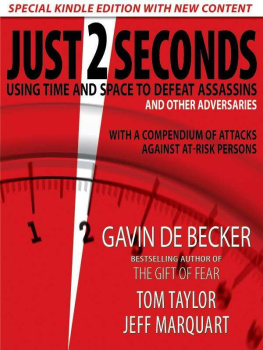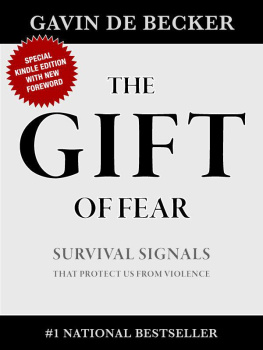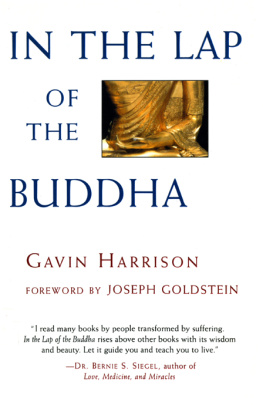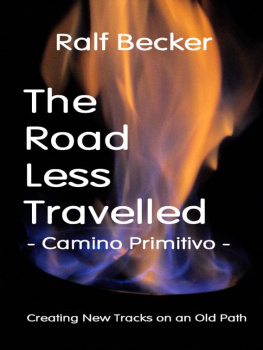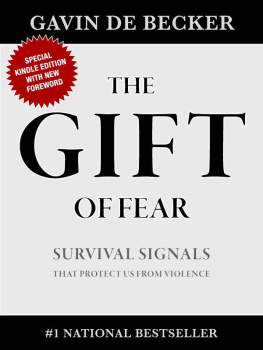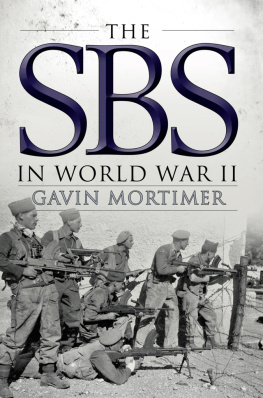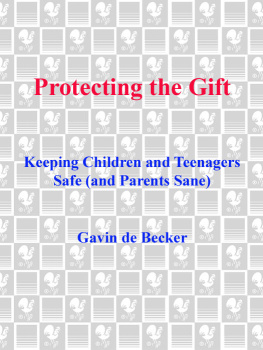Gavin de Becker - The Gift of Fear
Here you can read online Gavin de Becker - The Gift of Fear full text of the book (entire story) in english for free. Download pdf and epub, get meaning, cover and reviews about this ebook. year: 2010, publisher: Gavin de Becker, genre: Romance novel. Description of the work, (preface) as well as reviews are available. Best literature library LitArk.com created for fans of good reading and offers a wide selection of genres:
Romance novel
Science fiction
Adventure
Detective
Science
History
Home and family
Prose
Art
Politics
Computer
Non-fiction
Religion
Business
Children
Humor
Choose a favorite category and find really read worthwhile books. Enjoy immersion in the world of imagination, feel the emotions of the characters or learn something new for yourself, make an fascinating discovery.
- Book:The Gift of Fear
- Author:
- Publisher:Gavin de Becker
- Genre:
- Year:2010
- Rating:4 / 5
- Favourites:Add to favourites
- Your mark:
- 80
- 1
- 2
- 3
- 4
- 5
The Gift of Fear: summary, description and annotation
We offer to read an annotation, description, summary or preface (depends on what the author of the book "The Gift of Fear" wrote himself). If you haven't found the necessary information about the book — write in the comments, we will try to find it.
The Gift of Fear — read online for free the complete book (whole text) full work
Below is the text of the book, divided by pages. System saving the place of the last page read, allows you to conveniently read the book "The Gift of Fear" online for free, without having to search again every time where you left off. Put a bookmark, and you can go to the page where you finished reading at any time.
Font size:
Interval:
Bookmark:
OF FEAR
SURVIVAL SIGNALS THAT
PROTECT US FROM VIOLENCE
Gavin de Becker
The author is grateful for permission to include the following previously copyrighted material:
Excerpts from Amphigorey by Edward Gorey. Copyright by Edward Gorey. Reprinted by permission of Donadio & Ashworth, Inc.
Copyright 1997 Gavin de Becker
New Foreword Copyright 2010 Gavin de Becker
All rights reserved. No part of this book may be reproduced in any form or by any electronic or mechanical means, including information storage and retrieval systems, without written permission of the author, except where permitted by law.
To the two people who taught me the most about courage and kindness: my sisters, Chrysti and Melissa. And for my mother, and grandfather, and father.
Note : Men of all ages and in all parts of the world are more violent than women. For this reason, the language in this book is mostly gender-specific to men. When it comes to violence, women can proudly relinquish recognition in the language, because here at least, politically correct would be statistically incorrect.
Every story in this book is true, and 90% of the names used are the actual names of the people involved. The remainder have been changed to protect privacy or safety.
GdeB
In 2009, when Oprah Winfrey kindly dedicated an hour-long show to commemorate the tenth anniversary of the publication of this book, my publisher rushed to get a bunch more copies into print. They put out two editions, including one with a slightly revised cover.
Taken all together, The Gift of Fear has been published in twenty-five editions, including the first hardback, several paperback versions, two audio-books, and at least fifteen foreign-language versions.
Aside from content, what they all had in common till now was bulk, weight, ink, paper, laminates, glue, and packaging at every levelfrom the plastic they were sealed in to the cartons they were shipped in. Every copy spent some time in the back of a truck, train, warehouse, or storeroom. Given that The Gift of Fear was a #1 National bestseller in the US and Canada, imagine how many trips to how many stores so many people made.
With this special Kindle edition, my first literary child is now freed from the bonds of the material world, so to speak, and can sail instantly, efficiently, and without waste to anywhere on earth (and soon, beyond). No more need for the reader to use a 3,000 lb car to go get a 15-ounce book.
While the paper editions of The Gift of Fear have indexes listing some notable references, this Kindle edition allows the reader to find every occurrence of any reference, name, passage, subject, topic, or even individual wordinstantly.
While readers of the old editions might have occasionally benefited from having a dictionary nearby, readers of the Kindle edition can see the definition of every word at the instant its encountered.
Appreciating these technology advances, I also observe some of the ways in which other technologies place people at greater risk than they were a decade ago. There are chapters ahead about stalking and harassment, and given the role of the Internet in our lives, perpetrators now have a wider menu of intrusive strategies than they did when this book was first published. The Internet offers greater anonymity to unwanted pursuers, and less privacy to their targets. Technology has also expanded the ways in which violent people can track down those they intend to harm, and has, at the same time, made hiding much more difficult. The chapter ahead about mass shootings at businesses includes the warning signs that precede those terrible incidents. One is the perpetrators fascination with violent media, and technology has exponentially expanded the number and types of websites celebrating those themes. Theres a chapter about school shootings, and while I referred to violent video games from which a troubled student might draw inspiration, technology in the past decade has profoundly enhanced the realness and intensity of these games.
Social networking has changed the way people come into each others lives, and though offering women some insulation at the start of relationships, these sites also expose ones image and information to a larger population than might be wise. Through the Internet, some people have become emotionally invested in relationships with very little confirmable knowledge about the other person. They might not really know each other at all, yet feeling they do, some people have escalated in disturbing ways, all the way to murder of a competing suitor.
Still, even with the landscape changing in terms of connectivity and depth of personal information, the basic tenets of human behavior explored in this book remain unchanged. No matter what the method of communication between predator and target, actual challenges to safety arise only in personand thus, all thats really changed is the medium used for persuading someone to have an in-person meeting. The goal remains the same: Avoid being in the presence of someone who might do you harm . This book explores strategies predators use when grooming and persuading targets, and those strategies are the same whether via internet, email, text-messaging, telephone, snail-mail, or in person.
Media changeshuman nature does not. Violence and predation have been a part of human life for millions of years.
In studying any topic, you reach a point where you stop finding new wrinkles and instead identify factors that appear and reappear regularly. In the study of spousal homicide, for example, theres no shortage of data: In America, a woman is killed by a spouse every two hours. So after youve drawn lessons from, say, a thousand cases, and youve seen the same dynamic again and again, its possible to develop binding theories. Ironically, some of the key wisdom revealed through studying human violence was already known to animals.
Nature has developed remarkable defense systems, from the shell that protects the turtle, to the well-armed hive that reacts to intruders with single-minded coordination, each citizen willing to give everything to protect the queen. Like every animal in Nature, you too have a remarkable defense system. Youre the newest model of human being, the result of ages of R & D that makes the most fantastic computer seem like an abacus. Natures investment in you is far too great to leave you undefended, and while human beings didnt get the sharpest claws or strongest jaws, we did get the biggest brains. You have more brain cells than there are grains of sand on your favorite beach, and you have cleverness, dexterity, and creativityall of which powerfully combine when you are at riskif you listen to your intuition.
And yet, no matter how sophisticated or long-evolved a defense system might be, predators still catch prey off-guard so often, and no matter how sophisticated the predators resources, they too fail frequently. What can you do to be on the better side of these dangerous transactions? The first step is to be the best informed participant.
Predatory animals usually devour prey in order to convert flesh into fuel. Most human predators, however, seek power, not food. To destroy or damage something is to take its power. This applies equally to a political movement, a government, a campaign, a career, a marriage, a performance, a fortune, or a religion. To push a pie into the face of the worlds richest man is to take his power, if only for a moment.
When viewed as a contest between predator and prey, some human attacks look much like predation in nature: The surprise, the sudden movement, the burst of hostile energy, the jerky resistance, the wish to escape. If an animal taken by a predator could speak after the fact, hed likely tell us: It all happened so fast; there wasnt time to do anything.
Font size:
Interval:
Bookmark:
Similar books «The Gift of Fear»
Look at similar books to The Gift of Fear. We have selected literature similar in name and meaning in the hope of providing readers with more options to find new, interesting, not yet read works.
Discussion, reviews of the book The Gift of Fear and just readers' own opinions. Leave your comments, write what you think about the work, its meaning or the main characters. Specify what exactly you liked and what you didn't like, and why you think so.


